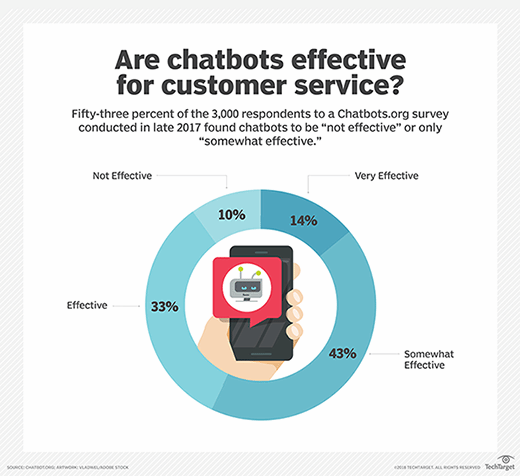CodeObjects taps Watson AI capabilities to develop chatbot offering
When a Florida-based insurance firm needed help handling surges in call-center volumes, it piloted InsurBot.ai, a chatbot that employs IBM Watson technology.
Editor's note: Channel partners are currently exploring how to incorporate AI capabilities into their customer offerings. This case study explores how CodeObjects used IBM Watson technology to develop its chatbot software, InsurBot.ai.
After a hurricane or other catastrophic disaster does damage, the last thing an insurance customer wants to deal with is answering a lot of questions for his or her claim. Of course, insurance companies' call centers are inundated after such an event, and Security First Insurance, Florida's second largest homeowners insurance company, was looking for a better way to be responsive to stressed-out customers.
"We handle about 1,500 claims a month, and we're staffed to do so, but when we have a hurricane, we have spikes and there's no ability to scale," said Werner Kruck, COO at Security First, based in Ormond Beach, Fla.
For example, just after Hurricane Irma in September 2017, over 40,000 customers filed claims, he said. Security First uses a third-party call center, but Kruck said customers still have a very long wait time.
"The problem we have is, we have the ability to staff the daily claims and we want to be the first people who talk to our customer," he said. But because Security First can't scale its internal call center, it knew it needed a better solution.
 Werner Kruck
Werner Kruck
So, Security First teamed up with CodeObjects, which offers the cloud-based property and casualty insurance platform that the company was already using, to test out new chatbot software it was developing on top of IBM Watson.
"We did a lot of research and found that CodeObjects had a passion for this," Kruck said.
Security First decided to be the first test case for the chatbot, dubbed InsurBot.ai.
Harnessing IBM's AI capabilities
CodeObjects also did its homework on AI capabilities and opted for IBM Watson because of its "superior" natural language processing, according to Arun Bala, vice president of product management at CodeObjects. Watson was able to figure out what a person was calling about and accurately recognized policy or claim numbers, he said, which was ideal for InsurBot.ai.
The chatbot software uses the Watson platform feature called the fallback prompt to facilitate customer interactions. For example, if the chatbot's prompt for a customer's information, such as a claim number, does not result in a valid response, the bot can provide alternative prompts. The fallback prompt feature enables a higher probability of obtaining valid responses from users.
 Arun Bala
Arun Bala
Watson AI capabilities also enable to the chatbot to navigate topics -- for example, if a caller starts off reporting a claim and then suddenly says something tangential like, "I want to know if my payment is overdue," Bala said.
"The bot can seamlessly navigate [users through] that deviation and then come back to the original conversation without custom coding, which is huge, because it allows you to build bots that can catch up and keep up with what the customer is saying," he said.
 Anthony Peccerillo
Anthony Peccerillo
Because "it's very cheap to switch from insurance company to insurance company, keeping you as a customer is important," explained Anthony Peccerillo, vice president of product marketing at CodeObjects. "Virtual systems are an awesome way to remove friction and create good communications between an insurance company and their customer," he said.
For CodeObjects, another appealing feature of IBM's AI capabilities was that Watson is an open architecture. Staff could devise an API layer that can talk to any back-end systems to retrieve data, Bala said.
Other Watson AI capabilities CodeObjects used to construct InsurBot.ai included a voice agent that orchestrates all the voice calls, speech-to-text and text-to-speech translations. Watson's service orchestration engine enabled integration to CodeObjects services to provide policy and claim information to Security First, Peccerillo said.
The first task CodeObjects focused on for InsurBot.ai was filing a claim, and officials brought in a team from IBM to help develop the functionality.
"We want to make sure we iterated it, tested it from all different angles and different people," Peccerillo said.
The real test: Hurricane Michael
CodeObjects had InsurBot.ai ready for deployment before Hurricane Michael in October 2018. "We determined we'd be upfront and transparent with people when they called that they could file with the chatbot or wait online for a person," Kruck said. "We had not put in all the learnings from the voice-to-text stuff, so it was a very basic chatbot."
During the period of Oct. 10 through Nov. 1, 36% of the people who called in chose the chatbot to file a claim, known as a first notice of loss, he said. The process went smoothly for the most part, he said.

"We had a couple of operational issues since we hadn't tested it in bulk, but they were quickly solved between IBM and the CodeObjects people," Kruck recalled. "There was latency between the chatbot and the system if the chatbot didn't get a response from the system, so it didn't know if the claim had registered." That led to the chatbot filing a second claim, so there was double reporting in some instances, but the problem was fixed within hours.
Next, Security First wanted InsurBot.ai to be able to take a payment. That capability was deployed in January. So far, InsurBot.ai has taken about 1,500 payments, and roughly 39% of callers elect to have the chatbot take their payments.
Security First is still using an external call center for claims processing, but Kruck said it is "limited in the level of service they provide. Our goal is to have a chatbot that is so good we can take the overflow," of customer volumes when the external call center is at capacity. It's very difficult to train a third party to talk to customers," he said. "Chatbots are trained on what your best customer service does" and are taught about context.
What's next for Insurbot.ai
One thing InsurBot.ai doesn't yet do is find a customer's information quickly, and Security First and CodeObjects are now working on that capability.
That means being able to locate customers' information quickly if they don't have their policy number handy, but they are calling from the phone number associated with the account. Kruck said they expect to offer that feature in the next couple of months.
As for CodeObjects, the company now has other insurance companies piloting InsurBot.ai.
Developing sentiment analysis technology
Unified Office Inc., a provider of cloud VoIP and unified communications software, was looking for a way to go through thousands of recorded customer interactions answered by hundreds of agents daily and flag the calls needing attention.
We needed to "identify problem calls [and] agents without relying on agent self-reporting," said Ray Pasquale, founder and CEO. "The sheer volume of calls they have to deal with are impractical to perform manually."
Pasquale looked at IBM Watson as well as AWS products. He said the offerings are robust, "but they're too expensive for many of our customers. We are focused on the SMB market that, in many cases, cannot justify the cost of these types of offerings."
So, instead, Pasquale and his staff identified a subset of the features available in Watson and other products that would benefit their customers and could be implemented with their own development resources. The Unified Office team used machine learning to produce AI algorithms that detect anger in recorded calls to help companies manage customer service reps.
In early 2018, they came out with a sentiment analysis offering that included some open source data sets components, but the sample sizes were too small, Pasquale said. "As a result, they didn't perform the way we expected. [There were] too many false positives and so we set about the task of designing our own neural network and machine learning tools."
The offering will be relaunched in the next couple of months. "Our early testing suggests a significant improvement in accuracy," he said.








